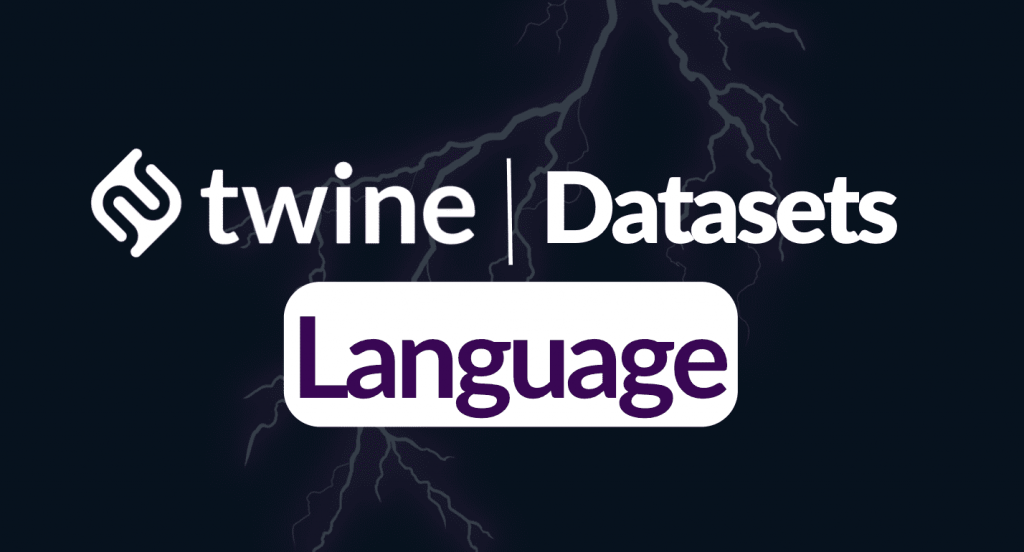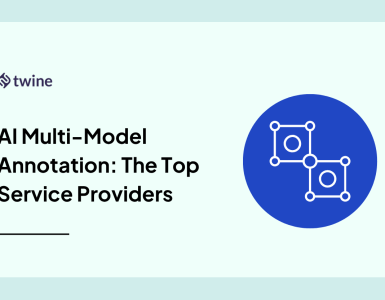There has been concern in the graphic design community that AI will take our jobs. Is AI a threat or an opportunity for graphic designers? In this article, we discuss how AI affects design, where we see the future of graphic design, and how designers can harness AI in their careers.
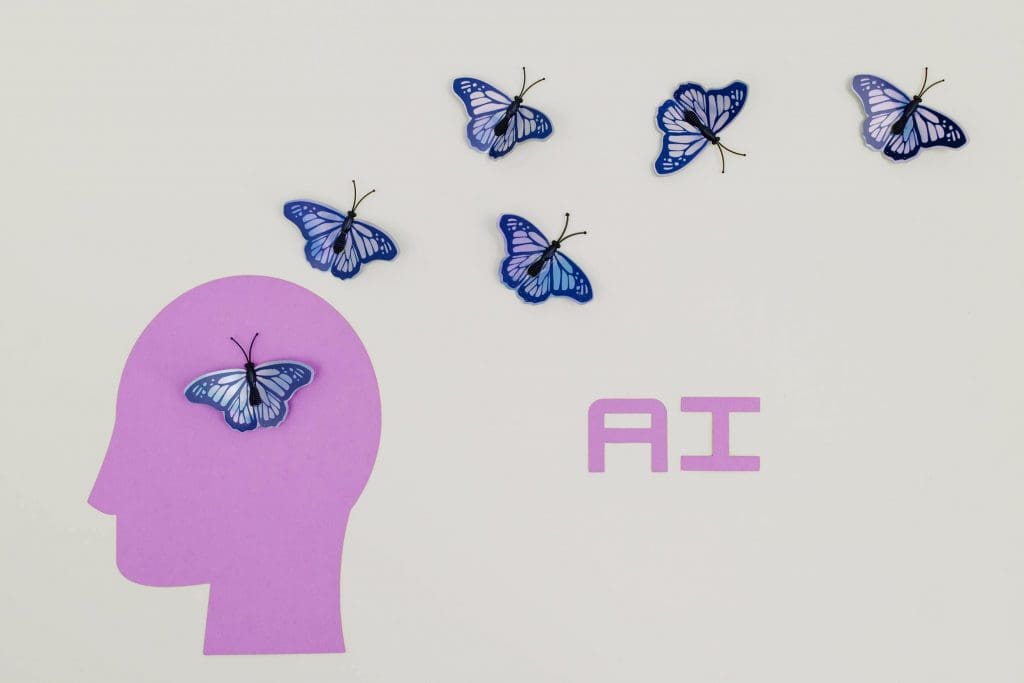
The impact of Artificial Intelligence (AI) advancements in the field of graphic design, revolutionizing the way visual content is created and consumed. However, it is crucial to recognize that AI still has limitations and struggles with certain aspects that human designers excel in. There are three key areas where AI faces challenges: understanding nuances, creating original content, and filtering biases.
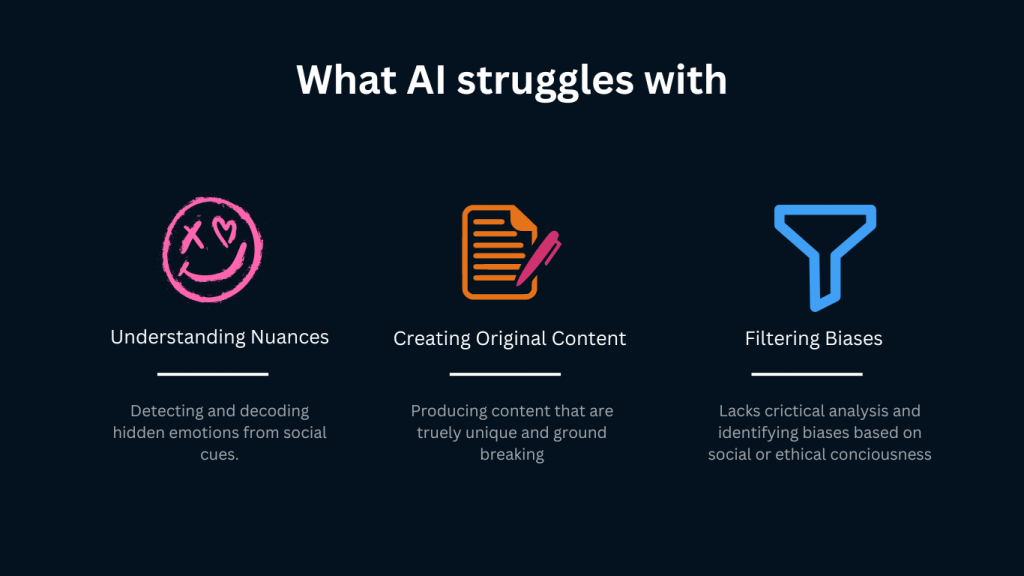
- Understanding Nuances: While AI algorithms can analyze vast amounts of data and generate designs based on predefined criteria, they struggle to comprehend the intricate nuances present in design. Nuances encompass cultural references, context-specific symbolism, and social sensitivities, which play a vital role in effective visual communication. People with design experience possess the innate ability to interpret and incorporate these nuances, ensuring that the design resonates with the intended audience on a deeper level.
- Creating Original Content: The ability to generate truly original and innovative ideas is one of the hallmarks of human creativity. Although AI can assist in generating design concepts based on existing patterns and data, it often falls short of producing designs that are truly unique and groundbreaking. Human designers possess the imagination and creative spark necessary to push the boundaries of design, infusing their works with fresh perspectives and novel ideas. There’s a big question about copyright infringement too. Is it an acceptable derivative work or is it infringing on another designer’s rights?
- Filtering Biases: Another challenge that AI faces in graphic design is effectively filtering biases. AI algorithms learn from existing data, and if the data contains biases or prejudices, the AI may inadvertently perpetuate them in the design process. On the other hand, human designers can critically analyze and challenge preconceptions, ensuring that their work is inclusive, ethical, and representative of diverse perspectives.
While we looked at the limitations of AI, there are areas where it stands out. Three key strengths of AI in graphic design: are dynamic personalization, handling multiple variables, and generating variations.
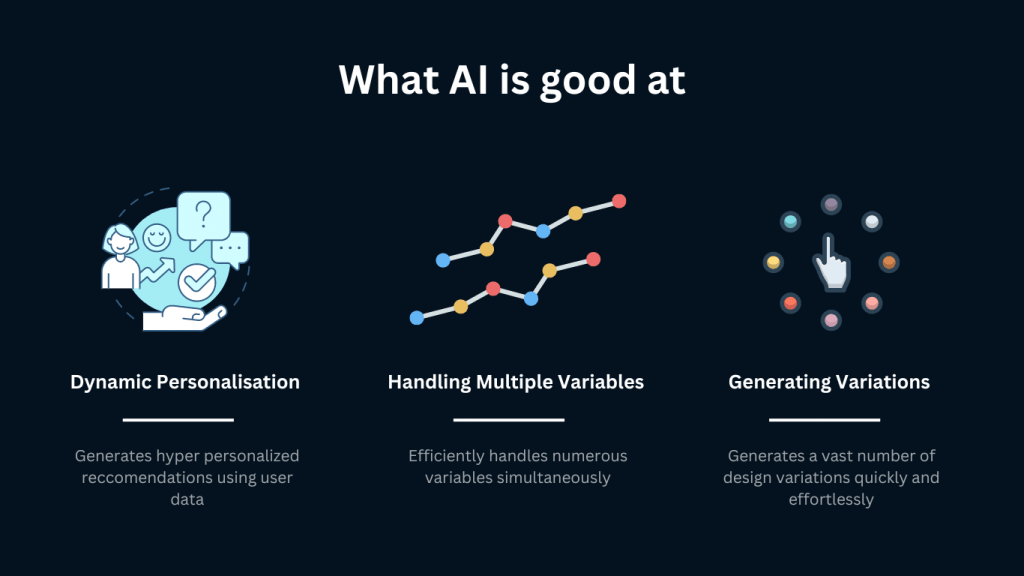
- Dynamic Personalization: One of the greatest advantages of AI in graphic design is its ability to personalize content dynamically. AI algorithms analyze vast amounts of data to understand user preferences and behavior, allowing designers to create tailor-made experiences. By leveraging user data, AI can generate personalized designs, layouts, and recommendations that cater to individual tastes and needs. This level of personalization enhances user engagement, satisfaction, and ultimately drives conversion rates.
- Handling Multiple Variables: Designing for multiple variables can be a complex and time-consuming task. AI simplifies this process by efficiently handling numerous variables simultaneously. Whether it’s creating responsive designs for different screen sizes, adapting layouts for various devices, or generating designs for multiple demographics, AI can seamlessly handle these challenges. By automating the adaptation process, designers can focus on the creative aspects, ensuring a consistent and optimized user experience across different platforms.
- Generating Variations: Generating variations is an area where AI truly shines. Designers often need to explore numerous options before settling on the final design. AI algorithms can generate a vast number of design variations quickly and effortlessly. By using machine learning techniques, AI systems can learn from existing designs, understand design principles, and generate creative alternatives. This not only saves time and effort but also sparks inspiration and encourages the exploration of design possibilities that may have otherwise been overlooked.
How to Adapt to the Evolving Role of Designers
With advancements in technology, designers are now required to possess a diverse skill set and a deep understanding of various tools and capabilities. Additionally, they must embrace ethics and adaptability as key design principles.
1. Understand Existing Tools and Capabilities
As technology continues to advance, designers must stay informed about the latest tools and capabilities available to them. This includes keeping up with the latest design software, prototyping tools, and emerging technologies such as virtual reality (VR) and augmented reality (AR). By understanding these tools, designers can leverage their full potential to create innovative and visually captivating designs.
Moreover, designers should also be aware of the limitations of these tools. While artificial intelligence (AI) has made significant advancements in graphic design, it still has its limitations. AI may struggle to understand the nuances of human emotions, cultural context, and subtle design elements. Therefore, it is crucial for designers to recognize where AI falls short and where their own creative instincts and expertise come into play.
2. Weave Ethics into Your Process
In an era where technology plays an increasingly prominent role in our lives, designers have a responsibility to consider the ethical implications of their work. Design decisions can have a profound impact on society, and it is essential to ensure that designs are inclusive, accessible, and respectful of diverse perspectives.
Designers should be mindful of biases that can be inadvertently introduced into their work. AI-powered design tools, for example, may inadvertently perpetuate stereotypes or reinforce existing biases if not carefully monitored and guided. By actively incorporating ethical considerations into the design process, designers can contribute to a more inclusive and equitable future.
3. Adaptability as a Key Design Principle
Adaptability is a fundamental skill for designers in an ever-changing landscape. Designers must be open to learning new techniques, exploring new mediums, and embracing emerging trends. This flexibility allows designers to keep pace with evolving user needs and preferences.
One way to enhance adaptability is by embracing a user-centered design approach. By involving users in the design process through research, testing, and feedback, designers can gain valuable insights and ensure that their designs meet the needs and expectations of their target audience.
4. Collaboration
Additionally, designers should embrace collaboration and interdisciplinary work. Partnering with experts from different fields, such as developers, marketers, and psychologists, can result in more holistic and well-rounded designs. By working together, designers can leverage multiple perspectives and skill sets to create innovative and impactful designs.
Don’t be a dinosaur
There is an opportunity here. While AI continues to make strides in graphic design, it is important to acknowledge its limitations. AI struggles with understanding nuances, creating original content, and filtering biases. These challenges highlight the unique skills and qualities that human designers possess. This is the opportunity. Rather than viewing AI as a threat, designers should embrace it as a powerful tool that enhances creativity and streamlines processes.
The future of graphic design lies in a collaborative partnership between AI and human designers, where AI serves as a supportive ally, complementing and augmenting human expertise. By harnessing the strengths of both AI and human designers, we can create visually captivating and meaningful designs that resonate with audiences worldwide.


